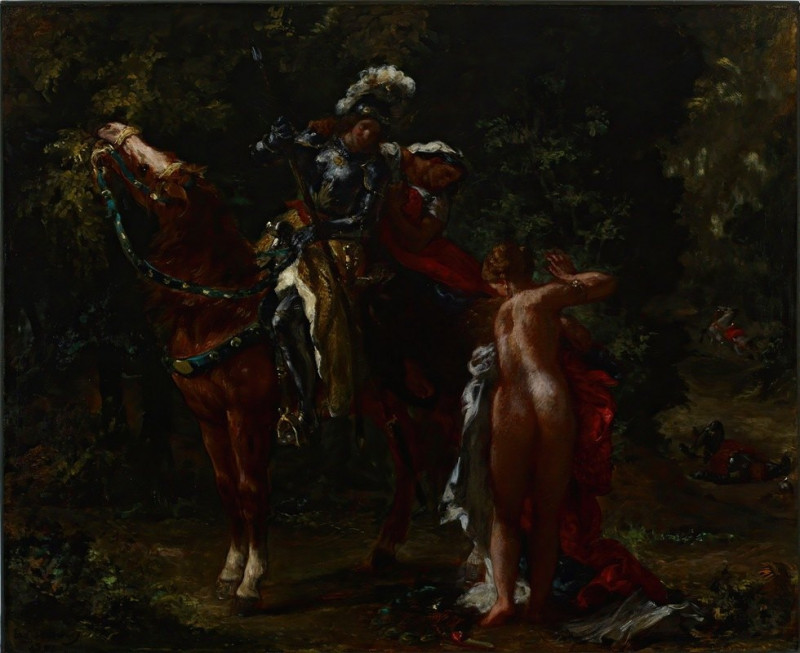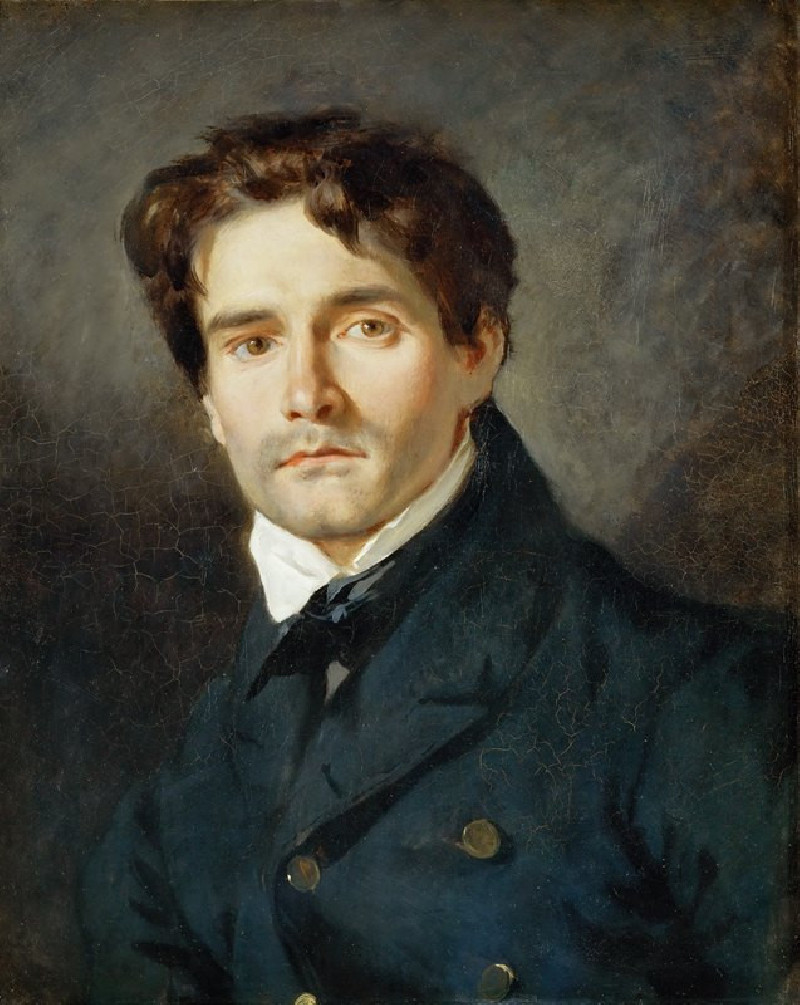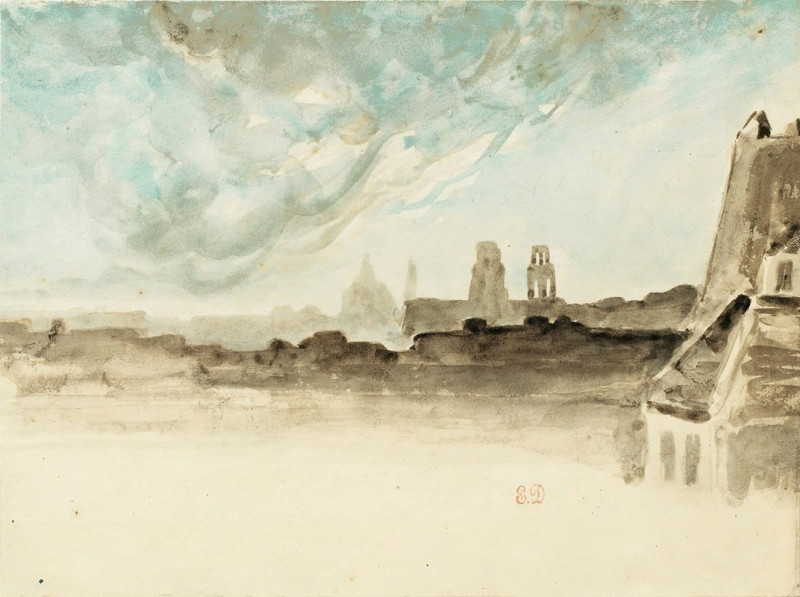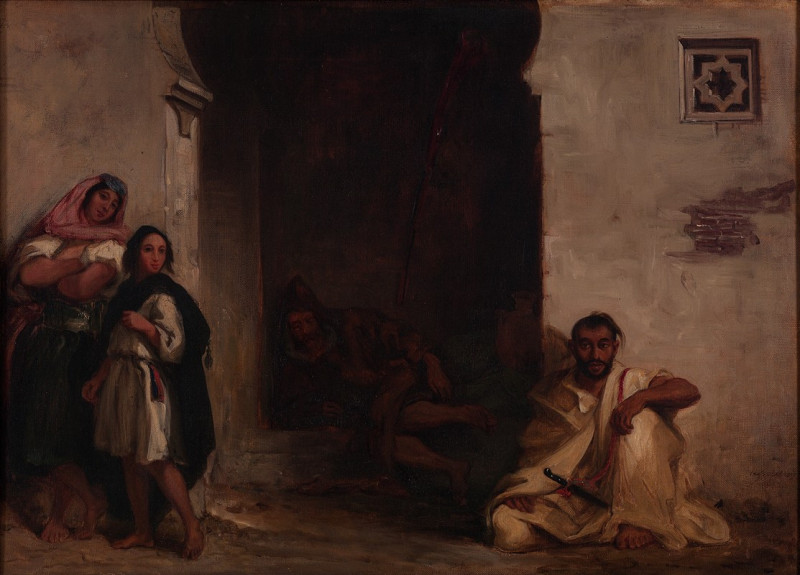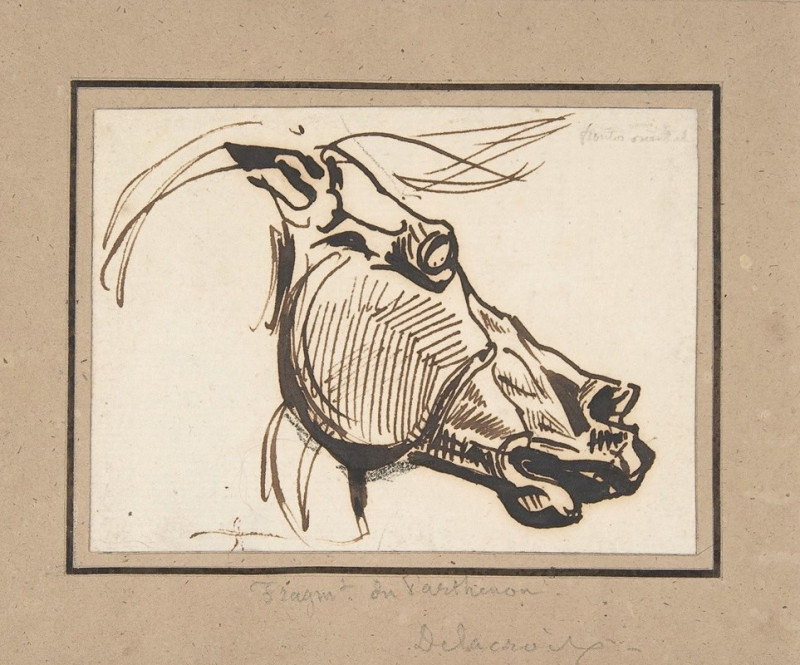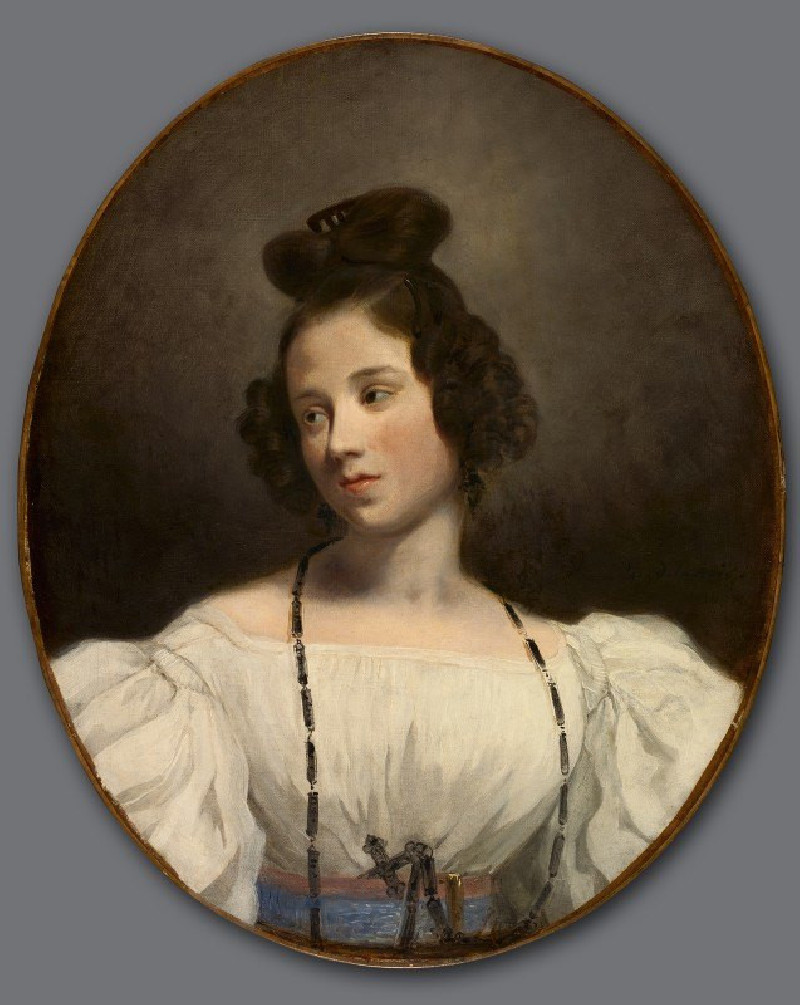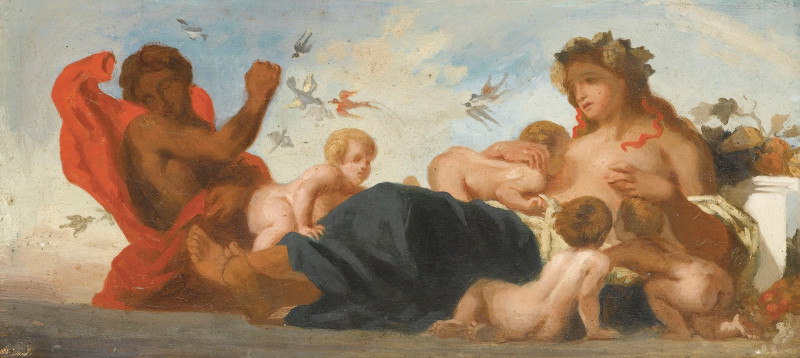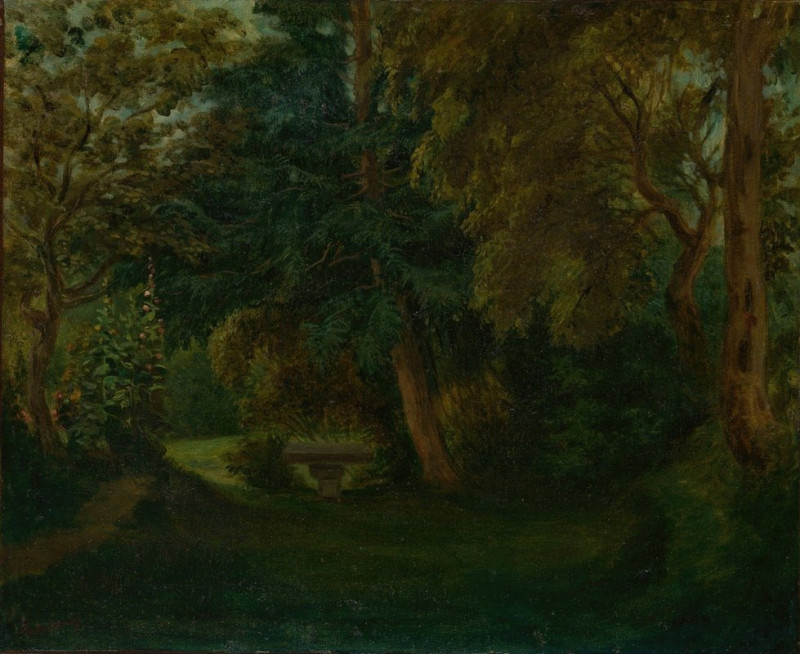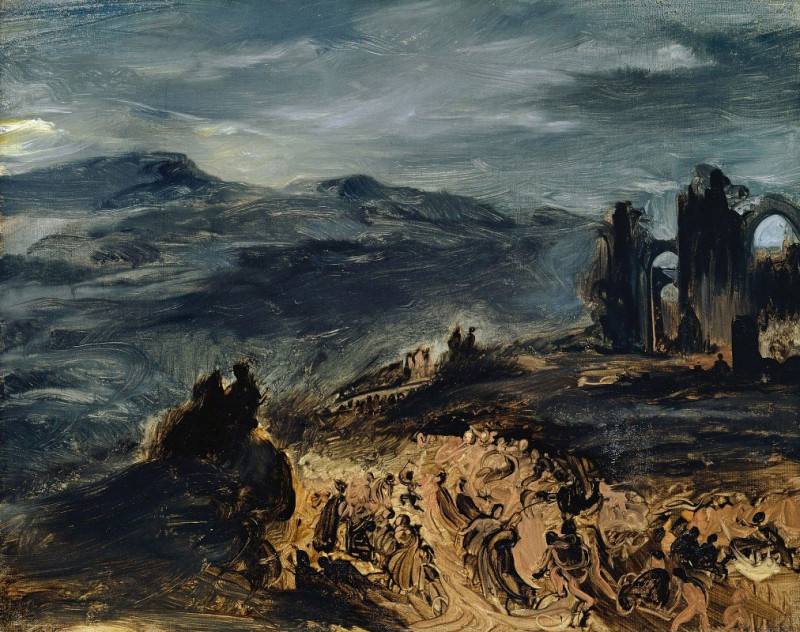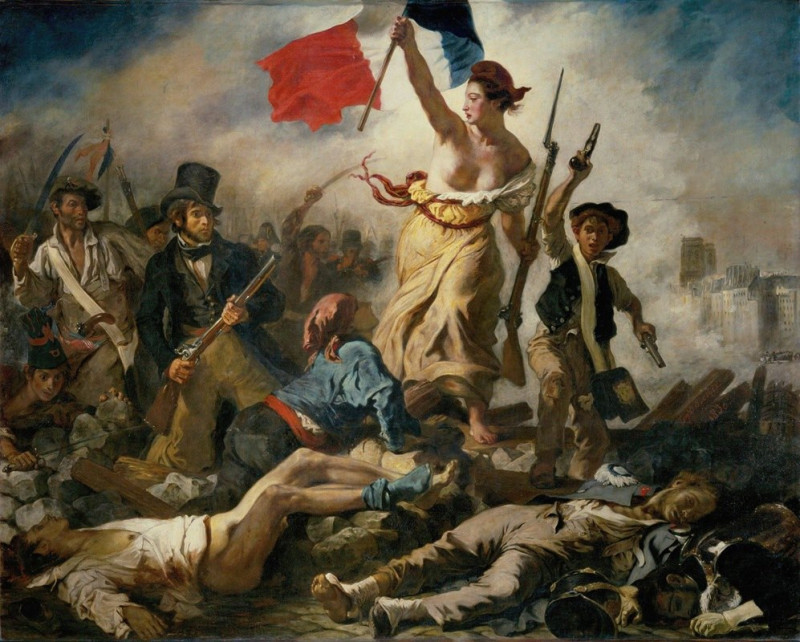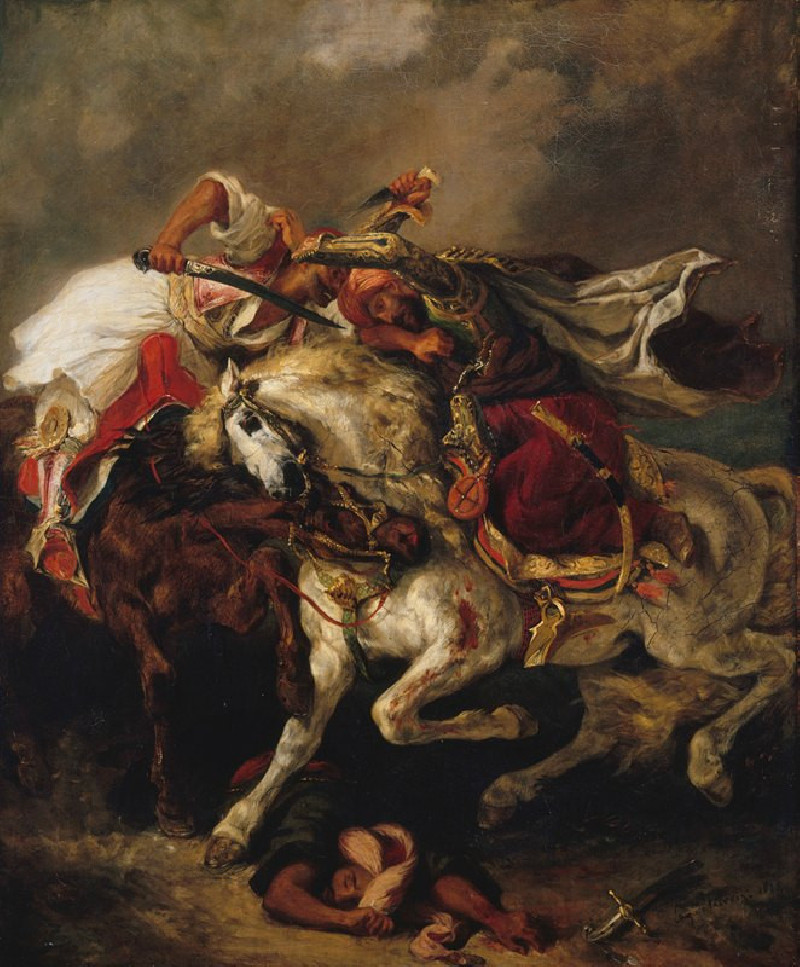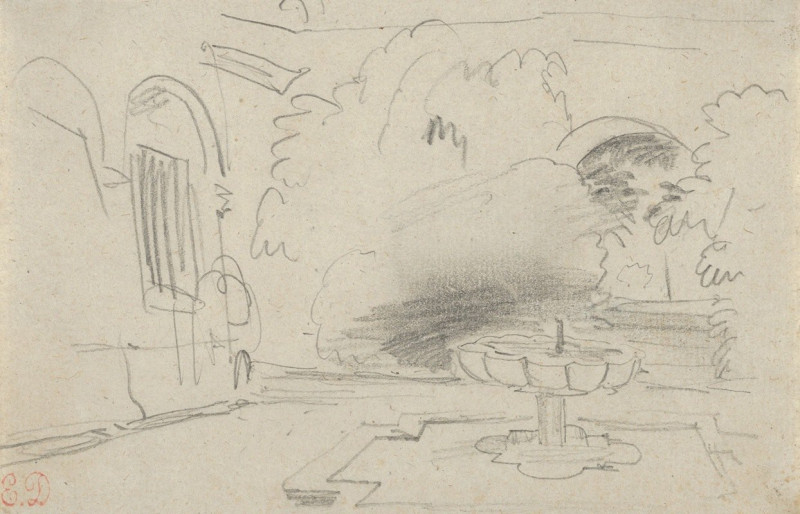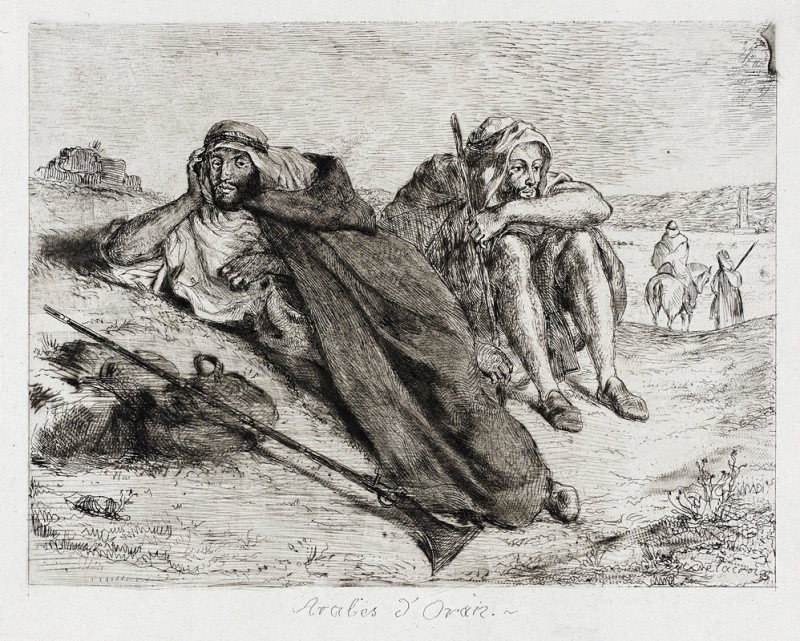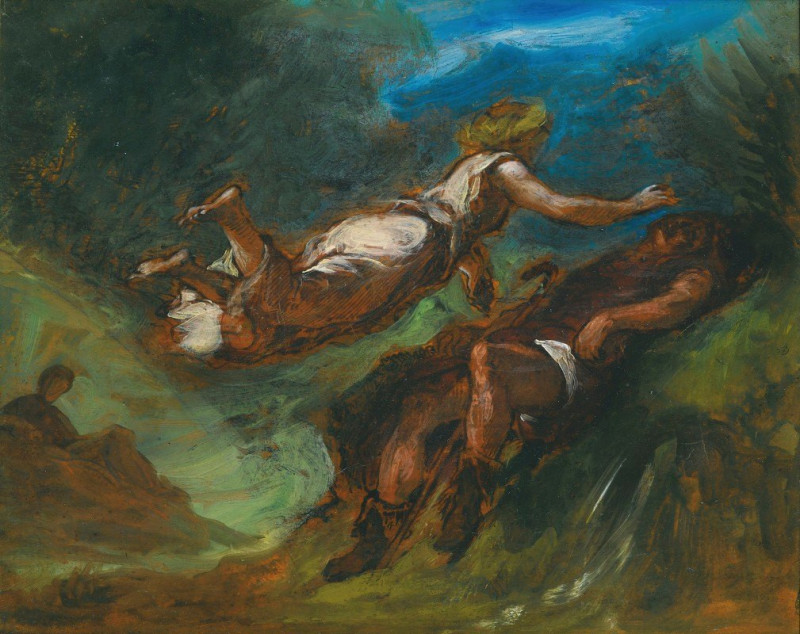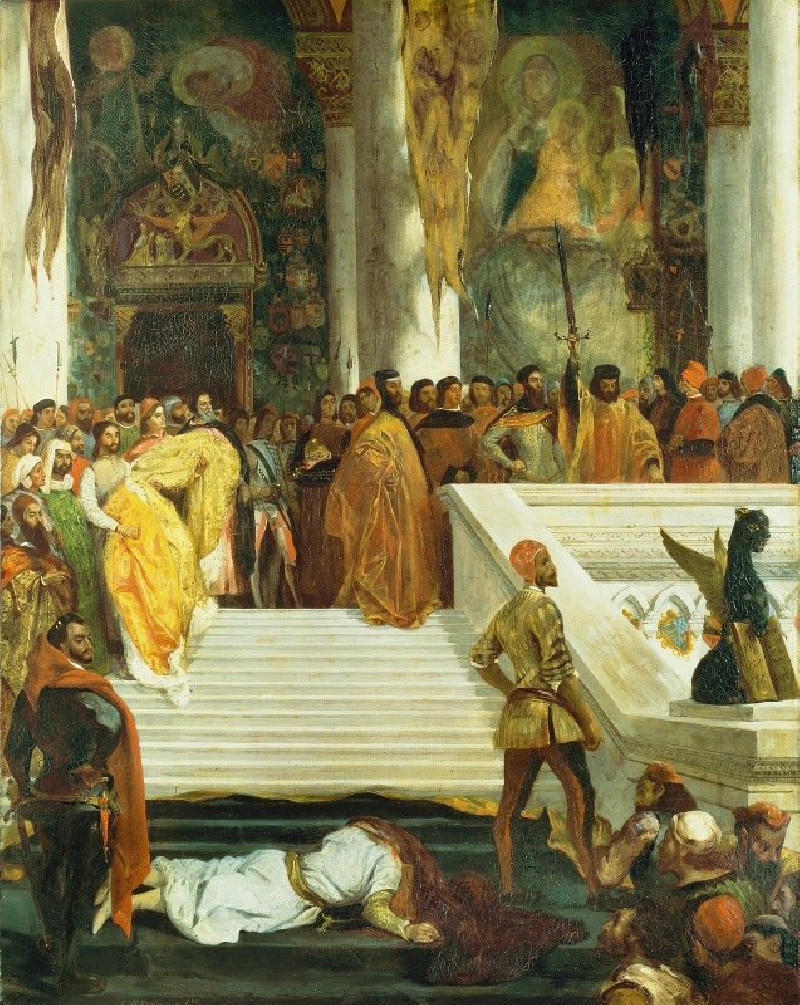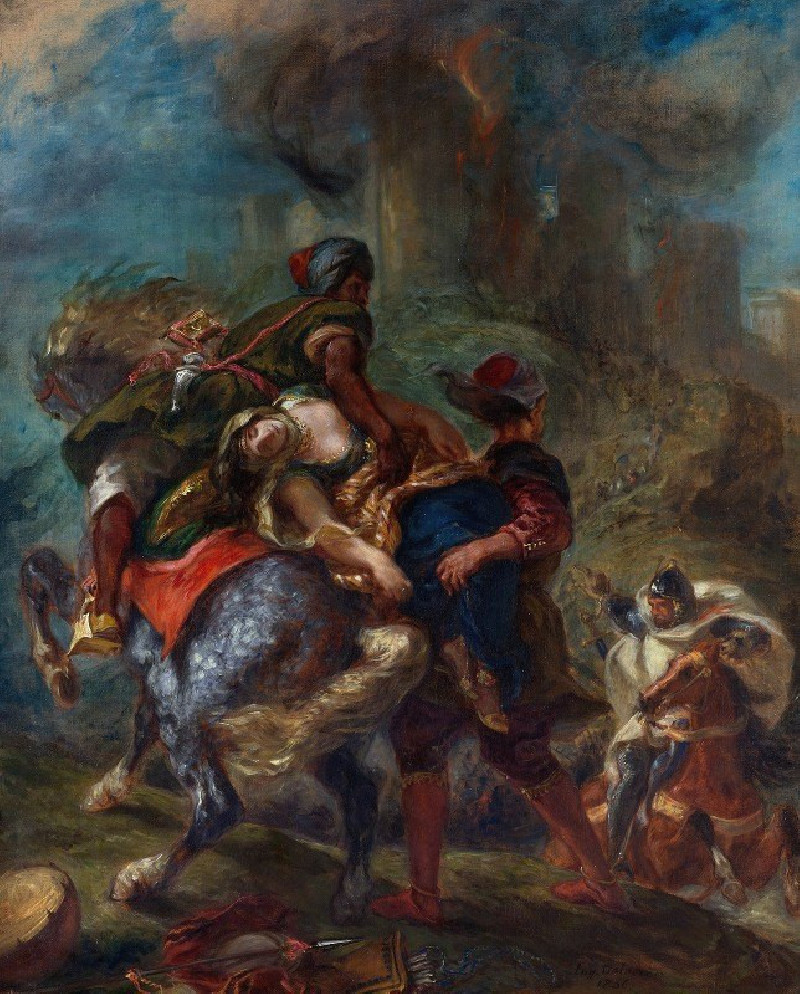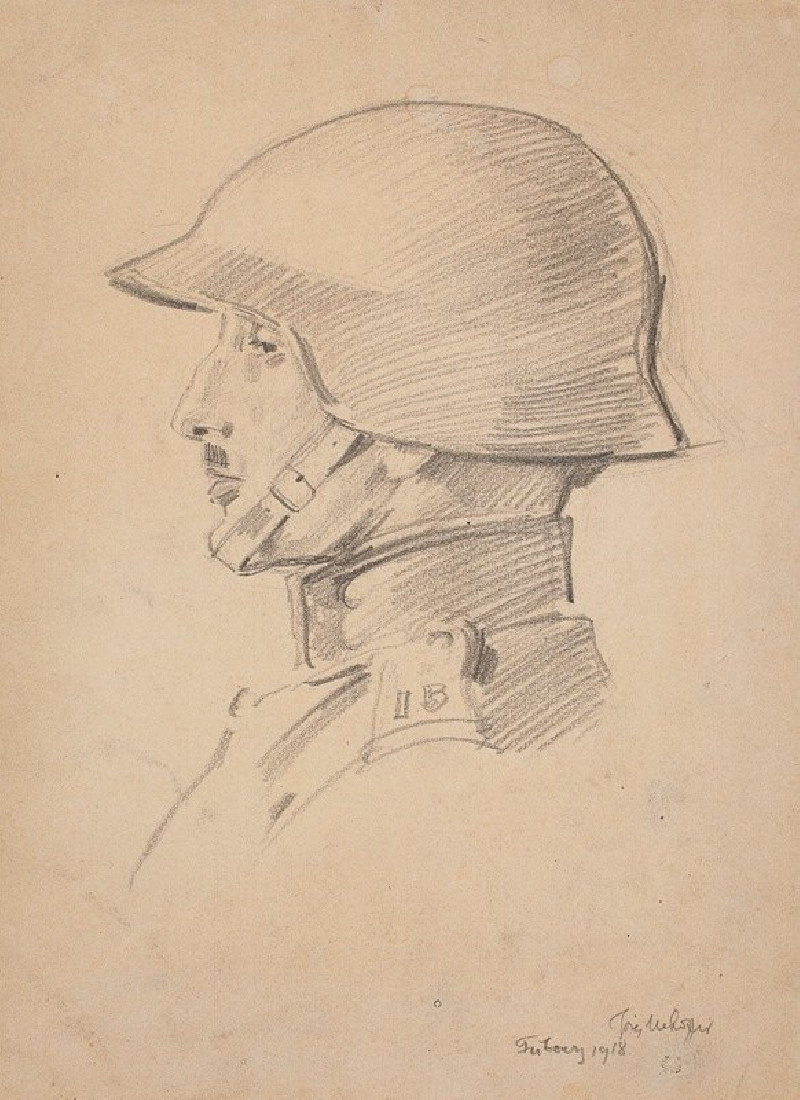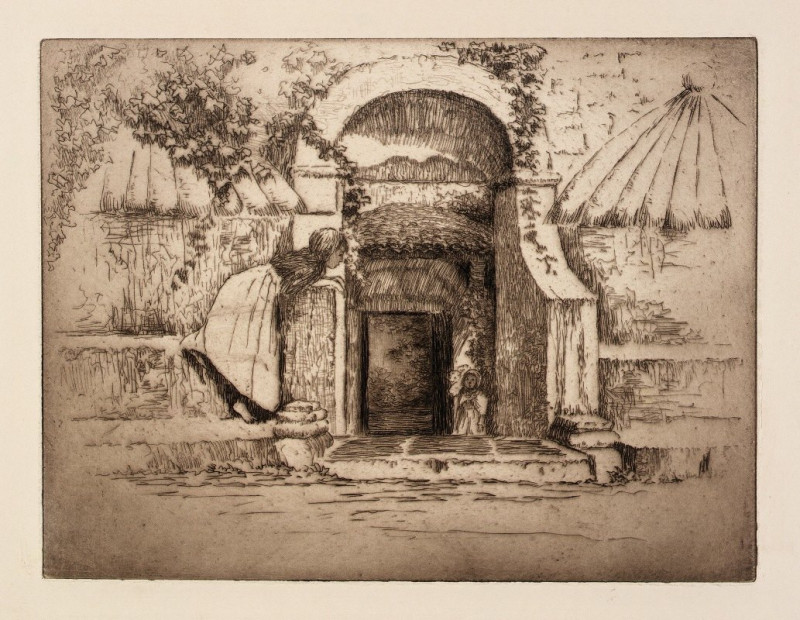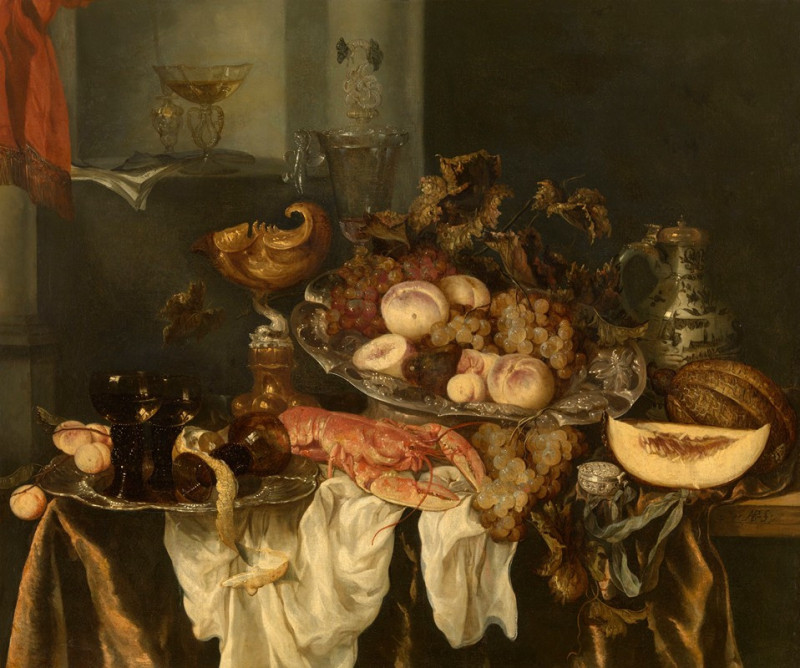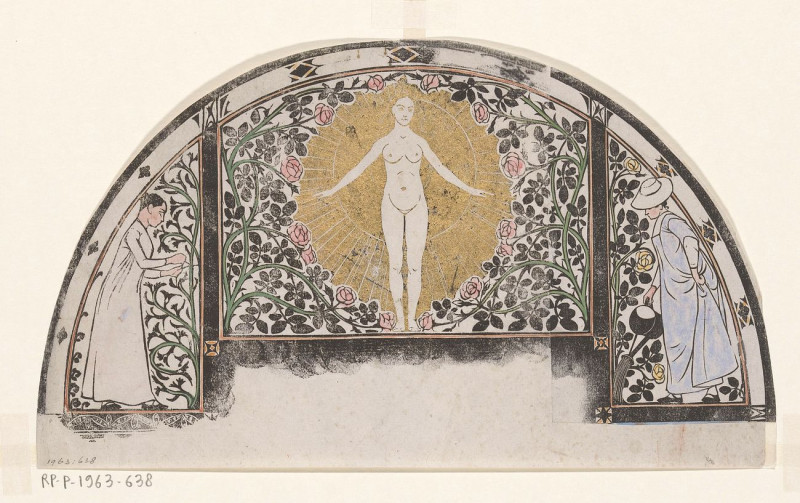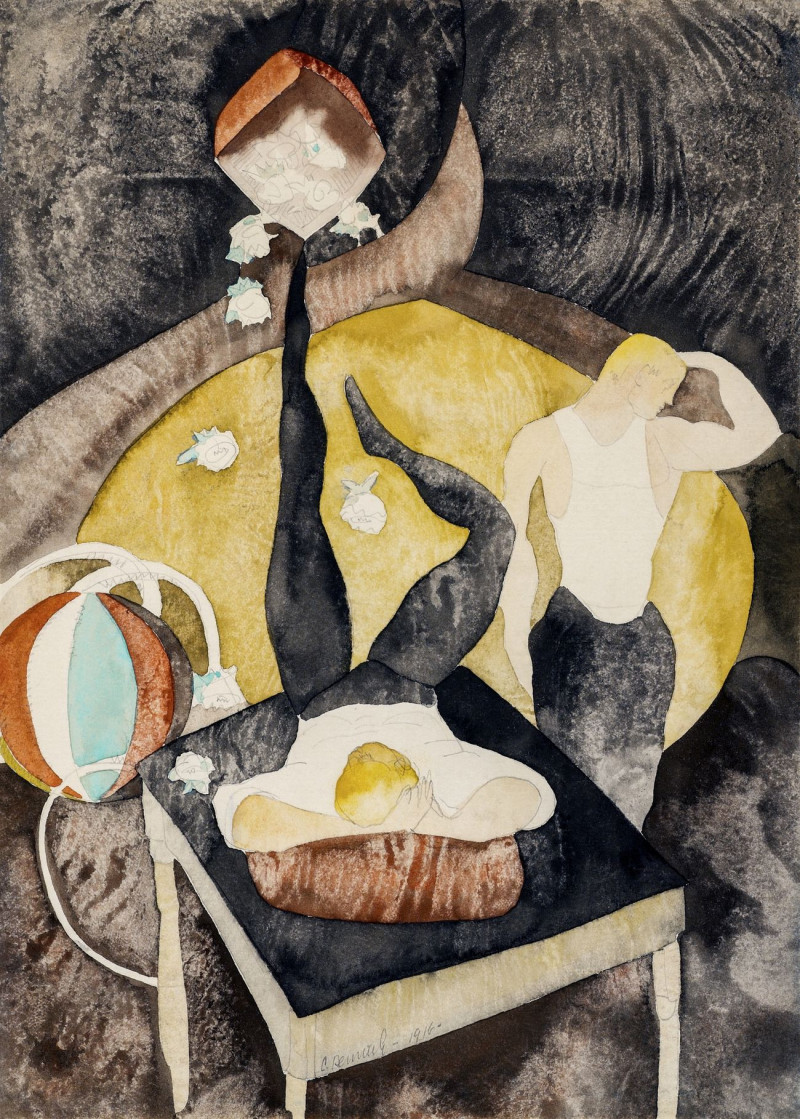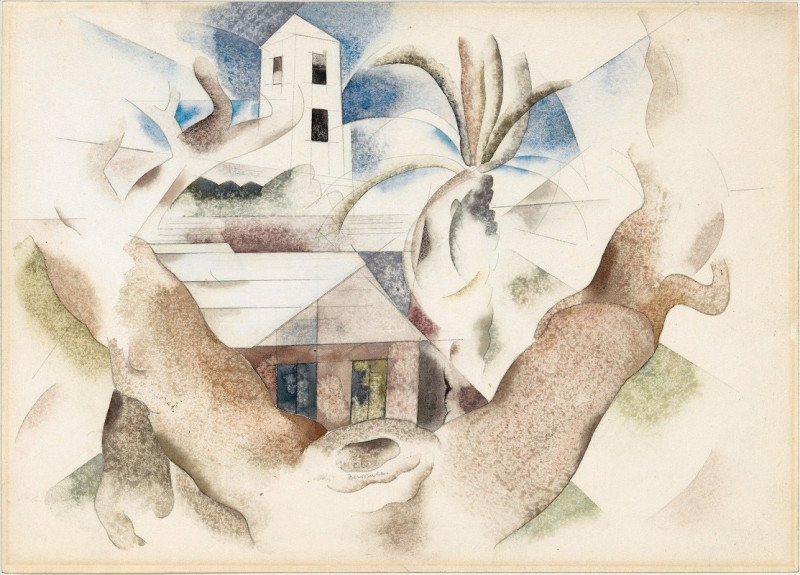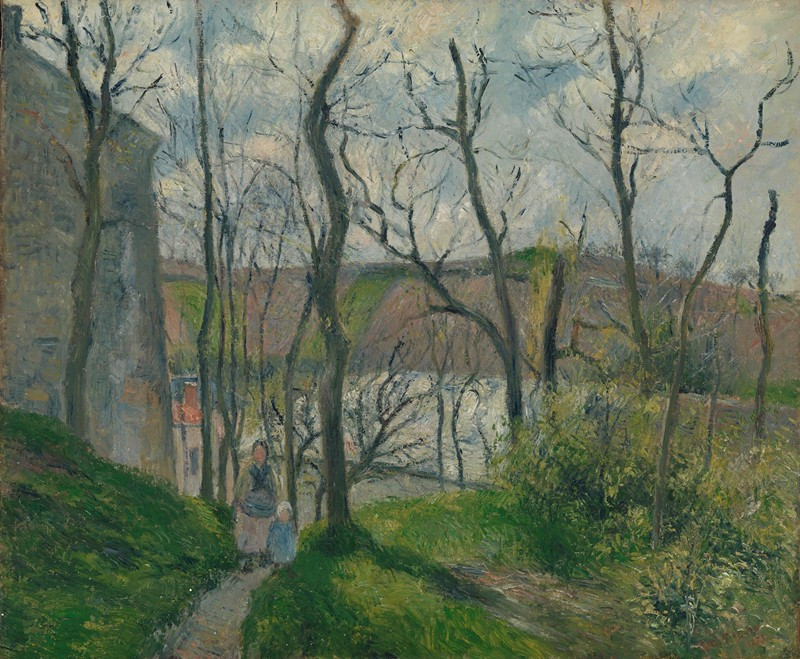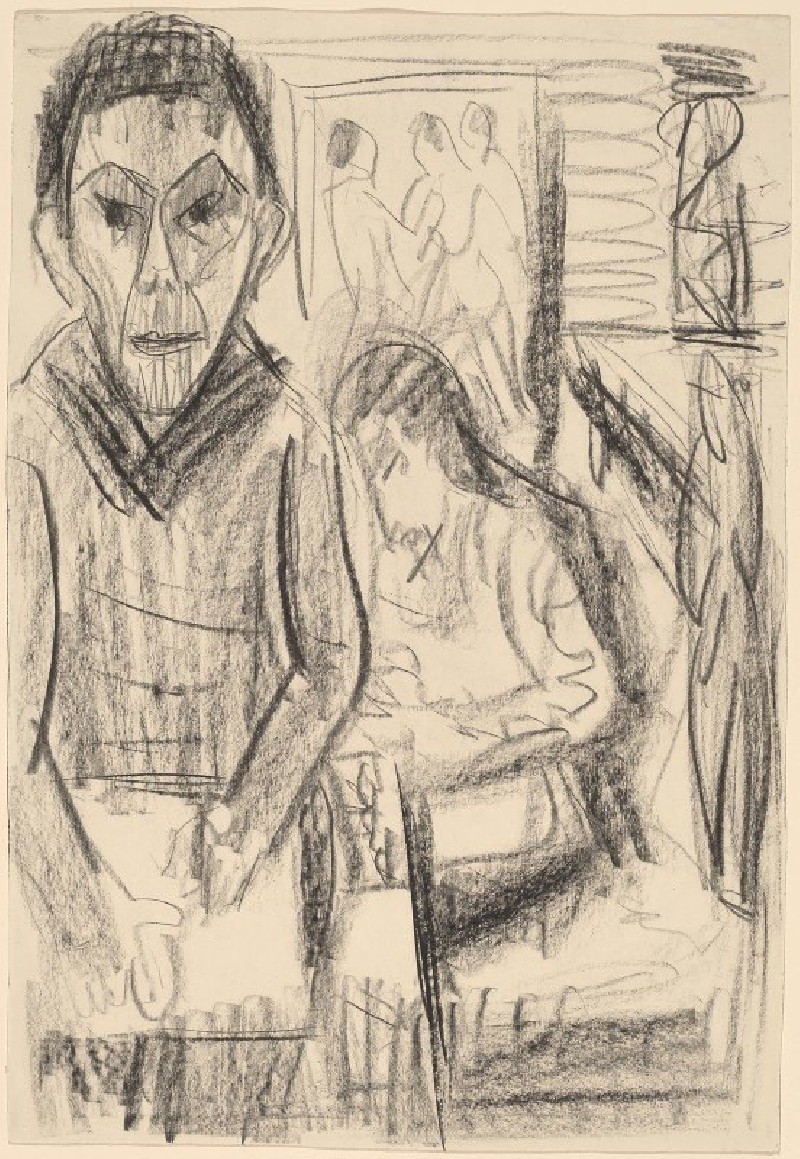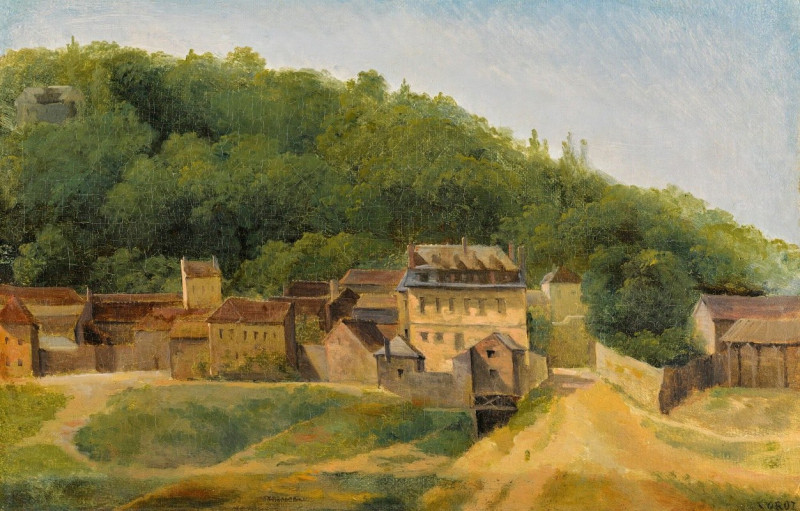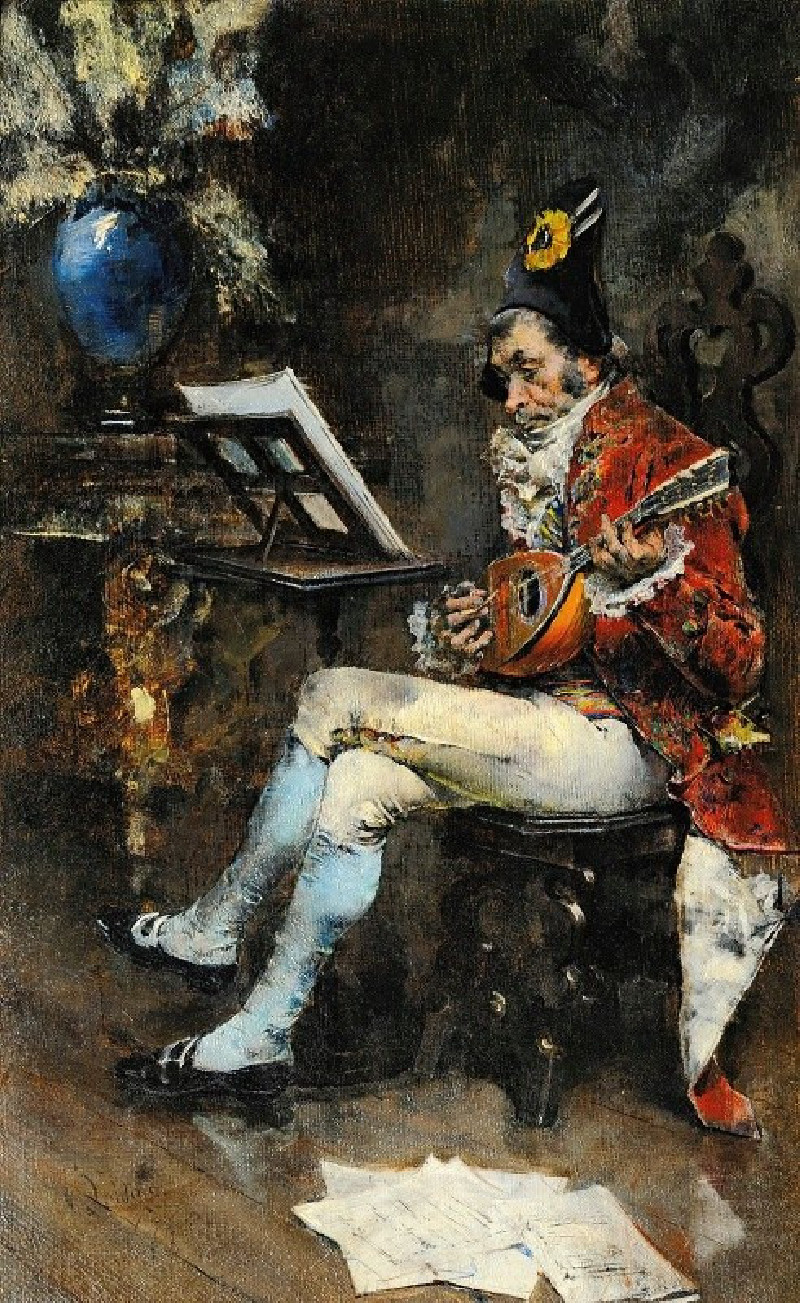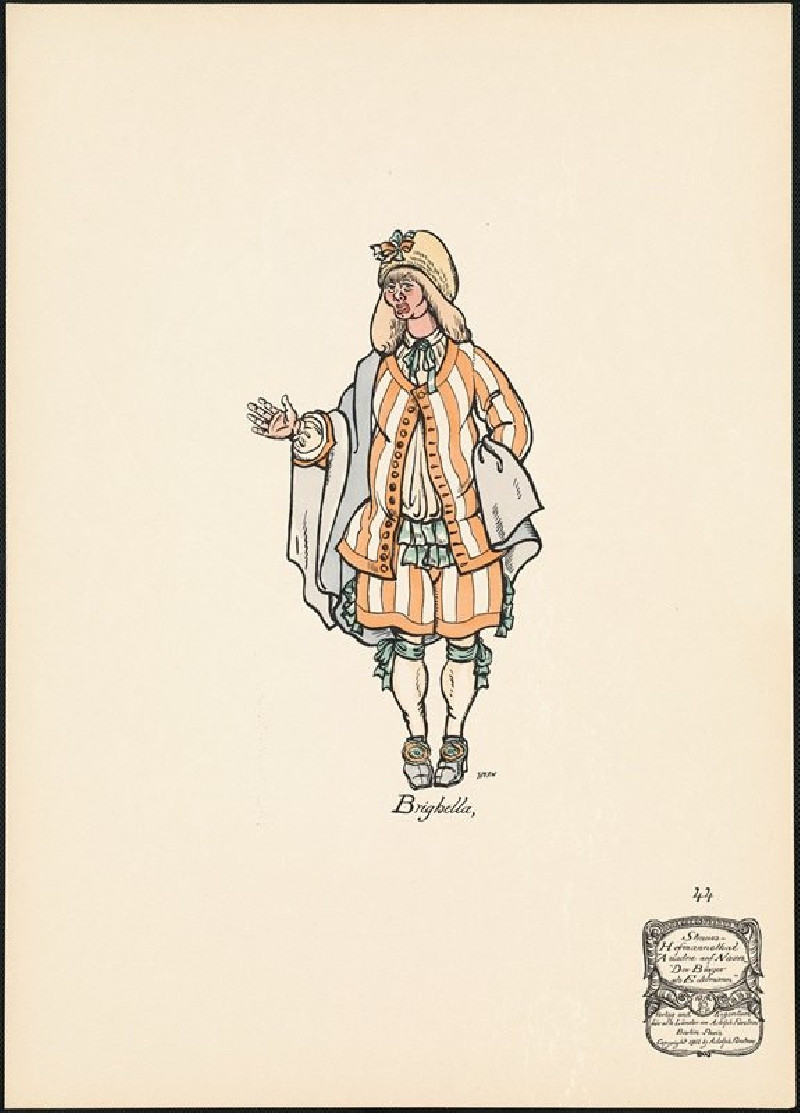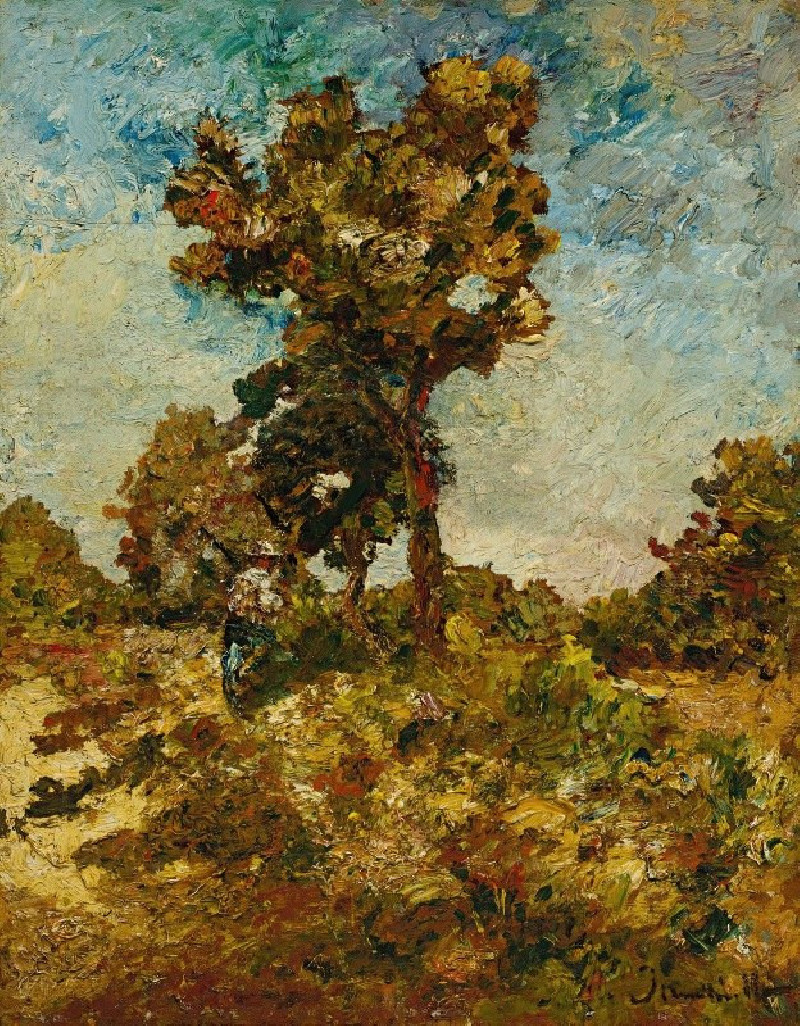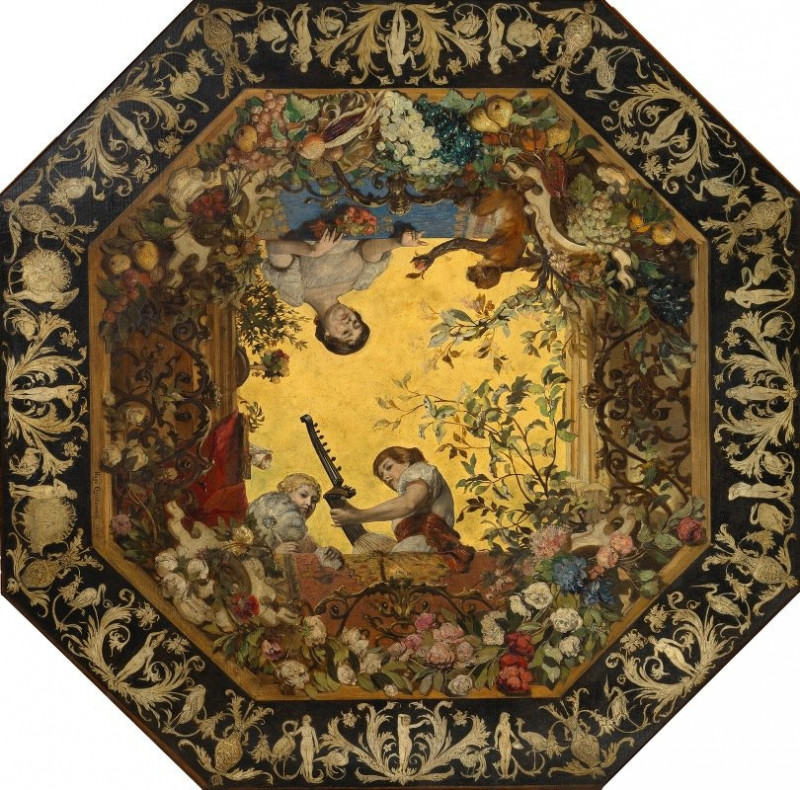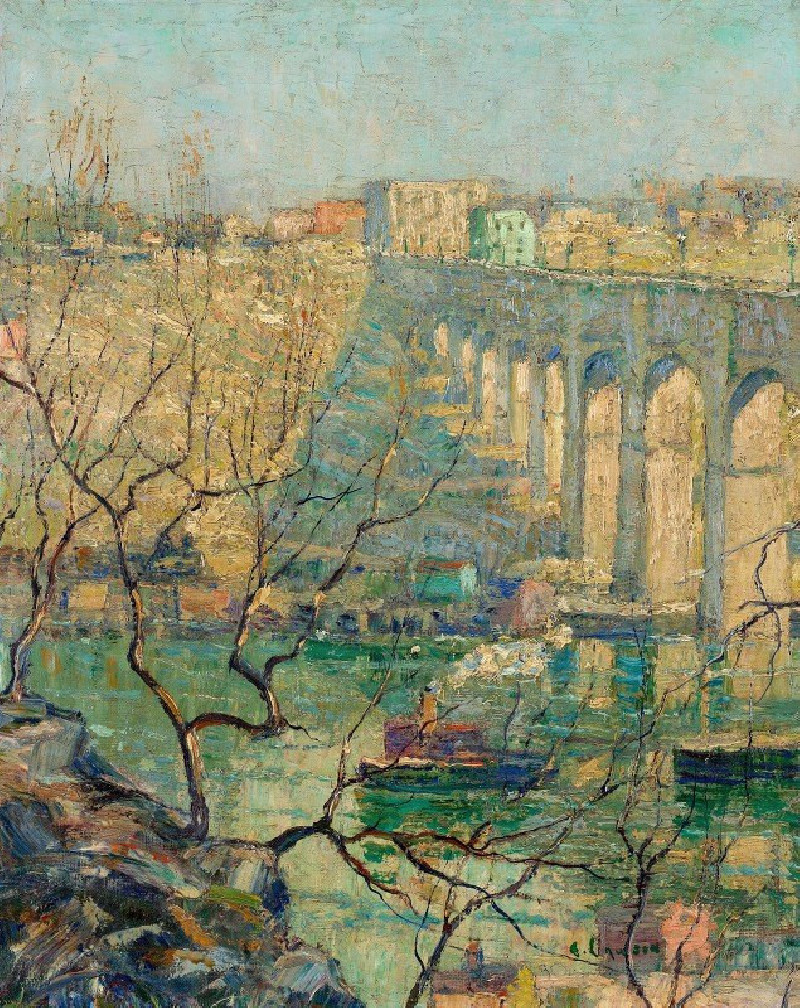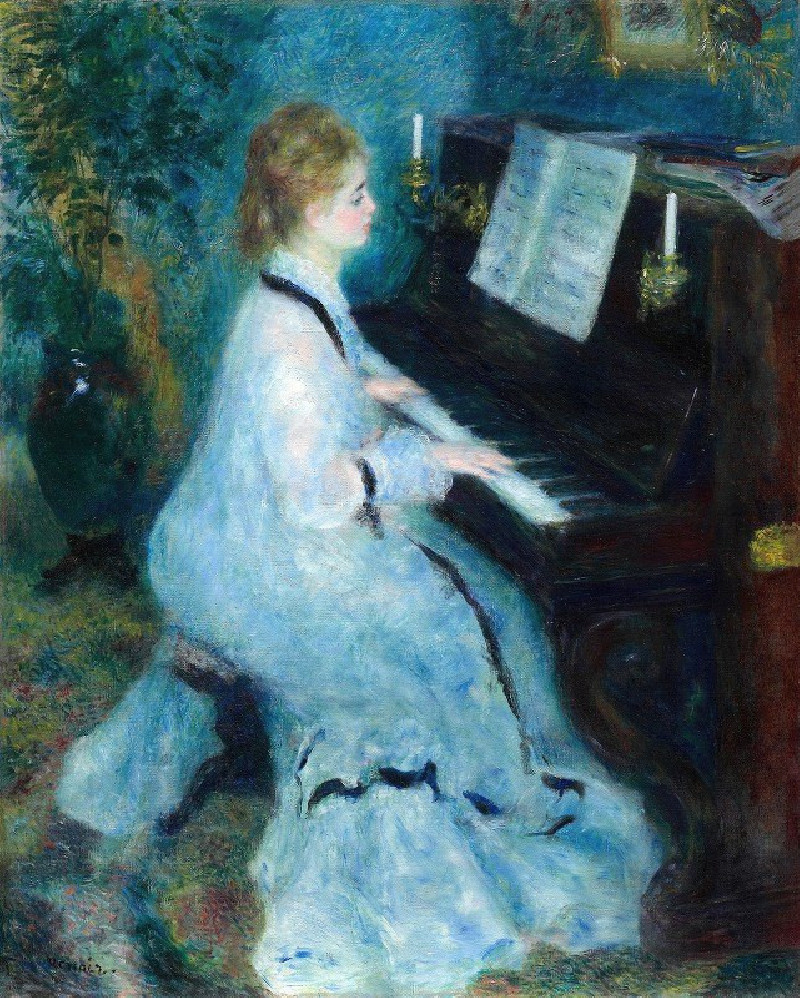The Edge of a Wood at Nohant (c. 1842-1843)
Technique: Giclée quality print
Recommended by our customers
More about this artwork
The painting "The Edge of a Wood at Nohant" by Eugène Delacroix, depicts a serene, densely wooded landscape that magnificently captures the essence of nature. Produced around 1842-1843, Delacroix's portrayal employs a palette of deep greens, earthy browns, and subtle ochres, which conjure the atmosphere of a secluded forest edge.This artwork, which utilizes the luminous capabilities of watercolor, skillfully balances light and shadow to evoke the lush textures and varied density of woodland foliage. Stark tree trunks stand out against the softer shapes of the shrubs and ground leaves, creating a visual narrative that invites the viewer into its depths. This pastoral scene likely reflects moments from Delacroix's own experiences and his fascination with the natural world, rendered with a vibrancy and immediacy that typifies his work.This piece not only serves as an exemplar of romantic landscape painting but also as a window into the peaceful, almost mystical qualities offered by the French countryside.
Delivery
Reproductions are made to order and take 5 to 7 working days.
We send them out by courier and delivery takes another two working days.
If you need a reproduction sooner, please contact us - we can usually find a solution and produce it a little faster.
If you don't want to pay for postage, you can pick up your paintings at our galleries in Kaunas or Vilnius.
Returns
Yes, reproductions can be returned.
If you have any doubts more than 30 days after the date of purchase, please contact us - we will take the reproduction back for a refund or offer you a replacement!
We accept a maximum of two returns per customer - please note that we make reproductions to order, so please choose responsibly.
We do not refund shipping expenses.


